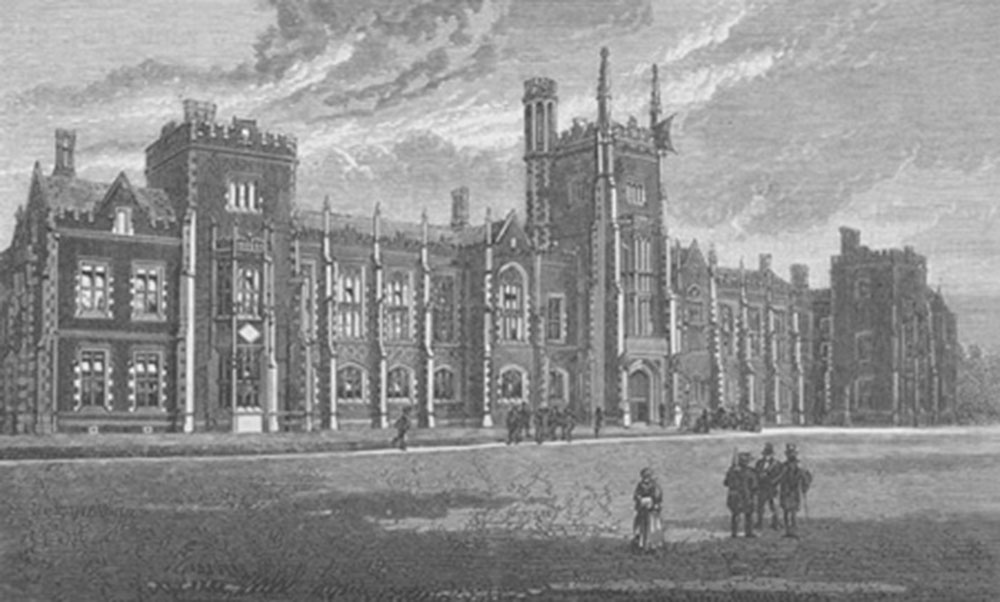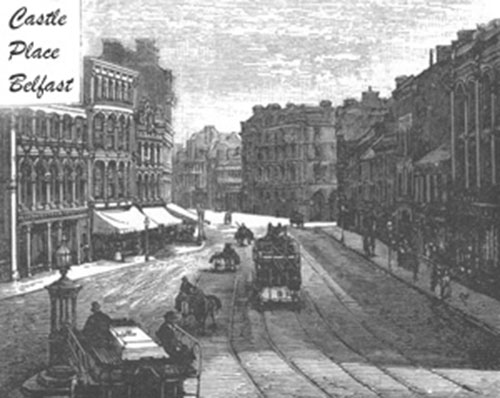Belfast - Irish Pictures (1888)
From Irish Pictures Drawn with Pen and Pencil(1888) by Richard Lovett
Chapter IX: Belfast, Armagh, and Londonderry
« Previous Page | Book Contents | Next Page »
ALTHOUGH the great and busy capital of Ulster has been left to one of the last chapters of this book, that fact must by no means be interpreted as any indication of the relative importance of that powerful centre of industry. The chief aim of the present volume has been to indicate the most picturesque parts of Ireland, giving the greater prominence to the less known and less frequented districts. But any book on the country would be imperfect which did not devote considerable space to a city second in Ireland in point of population, and in many respects the first and most important as a great centre of commercial life.
As in the case of Liverpool, Glasgow and other great ports, the growth of Belfast has been both recent and rapid. The references to it in the early records are brief and slight; in fact, its history may be said to begin about 1612, when Sir Arthur Chichester, ancestor of the present Donegal family, received from Charles I. a charter for the colony from Devonshire which he had planted on the shores of the lough. At the beginning of this century it numbered about 20,000 inhabitants, and at the last census considerably over 200,000! The day seems not far distant when it will outstrip Dublin in population.
It is admirably situated for the purposes of a great shipping centre, standing on the River Lagan, at the head of Belfast Lough. Much of the older part of the town occupies ground only a few feet above the level of the lough; and in earlier days floods were frequent, and epidemics were far too common. But improved drainage and attention to modern sanitary requirements have greatly improved this state of affairs.
Like Dublin, Belfast is rich in suburban beauty. In the eastern part of the town, and along the north shore of the lough the land slopes up from the water, reaching in the Cave Hill, which forms a very prominent object in the landscape, an elevation of over 1,100 feet. In this direction are many of the splendid houses of the rich Belfast merchants; and not in this direction only but wherever around the city suitable sites exist, they are occupied by the men who have at once enriched themselves and built up the business prosperity of the capital of the north.
Belfast is clean and free from smoke; the streets are well laid out, and contain handsome municipal buildings, churches, colleges, shops, and private houses. The chief thoroughfares are Donegal Place, Castle Street, Donegal Street, High Street, and the most recent and finest of all, Royal Avenue.


